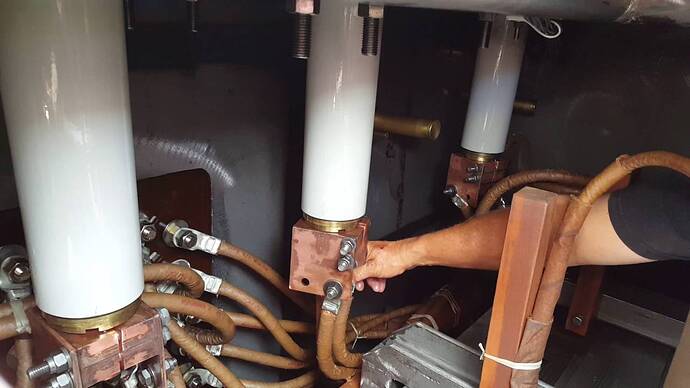When it comes to cable insulation, technicians must possess a comprehensive understanding of the materials they work with. This knowledge is important for conducting insulation tests effectively and preventing inadvertent damage to the insulation.
In this technical brief, we will delve into the most commonly used cable insulation materials, their characteristics, and considerations for their usage.
1. Thermoplastic Insulation
Thermoplastic compounds are materials that exhibit a softening effect when heated and hardening when cooled. Among thermoplastics, Polyvinyl Chloride (PVC) and Polyethylene (PE) are extensively employed as cable insulators.
a. PVC (Polyvinyl Chloride)
Polyvinyl Chloride (PVC) stands as the most prevalent thermoplastic insulator due to its affordability, durability, and widespread availability. PVC contains chlorine, which can generate thick, toxic black smoke when burned, making it unsuitable in environments where low smoke and toxicity are vital considerations.
PVC operates within typical temperature ranges of 75°C to 105°C (depending on the type), with a temperature limit of 160°C (< 300mm²) and 140°C (> 300mm²). It also exhibits high dielectric losses and is susceptible to melting at elevated temperatures, which makes it unsuitable for medium to high voltage (MV/HV) applications.
b. PE (Polyethylene)
PE belongs to a class of polymers known as polyolefins and offers lower dielectric losses compared to PVC. Polyethylene demonstrates sensitivity to moisture under voltage stress, making it more suitable for high-voltage applications.
PE exhibits the lowest dielectric losses and boasts high initial dielectric strength. However, it is known to break down at high temperatures. It is also highly sensitive to water treeing, a phenomenon where the material degrades when exposed to water under electrical stress.
2. Thermosetting Insulation
Thermosetting compounds encompass polymer resins that undergo an irreversible curing process, such as vulcanization through heat, to form a plastic or rubber-like material. Two commonly used thermosetting insulation materials for cables are Cross-Linked Polyethylene (XLPE) and Ethylene Propylene Rubber (EPR).
a. XLPE (Cross-Linked Polyethylene)
XLPE differs from PE due to its cross-linked polyethylene chains, which prevent the polymer from melting or separating at elevated temperatures. While XLPE exhibits higher dielectric losses compared to PE, it possesses superior aging characteristics and resistance to water treeing.
Operating temperatures for XLPE typically range from 90°C to 110°C, with a temperature limit of 250°C. XLPE has low dielectric losses, and though it does not melt, it experiences thermal expansion.
b. EPR (Ethylene Propylene Rubber)
EPR, a copolymer of ethylene and propylene, falls into the category of elastomers. It offers increased flexibility compared to both PE and XLPE but exhibits higher dielectric losses.
Ethylene Propylene Rubber operates within temperature ranges of 90°C to 110°C, with a temperature limit of 250°C. While EPR demonstrates low sensitivity to water treeing, it necessitates the use of inorganic fillers or additives.
The reduced thermal expansion of EPR, relative to XLPE, makes it a preferred choice in certain applications.
3. Paper-Based Insulation
Paper-based insulation, the oldest type of power cable insulation, continues to find application primarily in high-voltage cables. This type of insulation requires impregnation with a dielectric fluid, such as oil resin or synthetic fluid. Additionally, a lead sheath is often applied to prevent moisture ingress into the paper insulation, as it is highly sensitive to moisture.
Paper-Based Insulation is used inside of liquid-filled transformers to connect winding taps and cable terminals. Photo: YouTube
Paper-based insulation exhibits medium to low dielectric losses and remains unaffected by DC testing. It boasts a long-standing history of reliability. However, there are several considerations to keep in mind.
This type of insulation tends to be heavier, more costly, and necessitates hydraulic pressure or pumps for the insulating fluid. Repairing paper-based insulation can prove challenging, and it degrades when exposed to moisture.
Summary
Understanding the various types of insulation materials is critical for test technicians working with cables. Each material possesses distinct characteristics that must be taken into account during insulation testing.
Whether it’s the affordability and durability of PVC, the lower dielectric losses of PE, the high-temperature resistance of XLPE, the flexibility of EPR, or the reliability of paper-based insulation, selecting the appropriate insulation material is vital for ensuring safe and efficient cable operations.
By being well-versed in these materials, test technicians can make informed decisions and mitigate potential risks during cable testing and maintenance procedures.
Related: Power Cable Testing and Diagnostics Overview


